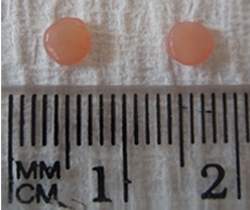Confirmando seu compromisso público de dar acesso irrestrito à produção científica da instituição, a ENSP/Fiocruz iniciou a liberação do material didático produzido no âmbito de seus cursos de educação a distância. O primeiro material a fazer parte desta ação - que já é uma política institucional - é o do Curso Nacional de Qualificação de Gestores do SUS. Este processo teve início no Seminário Internacional Acesso Livre ao Conhecimento, que inaugurou o ano letivo da ENSP, em abril, e está alinhado ao Movimento Internacional de Acesso Livre ao Conhecimento. A ideia é que, aos poucos, os materiais de todos os cursos da EAD/ENSP sejam disponibilizados.
O acesso a materiais em um repositório institucional complementa e potencializa sua função, trazendo muitos benefícios para a instituição. Atualmente, a EAD/ENSP tem mais de 60 mil alunos inscritos e quase 32 mil alunos egressos de seus 46 cursos, que abrangem todos os estados brasileiros. O Curso Nacional de Qualificação de Gestores do SUS também atinge todas as regiões do país. Nele, já foram formados mais de 5 mil alunos e sua segunda versão pretende atingir mais de 7 mil participantes. Segundo Victor Grabois, membro da coordenação nacional do CNQGS, existe uma grande demanda nacional por esta formação, e a liberação de seu material didático contribui para a disseminação desse conhecimento.
Para o diretor da ENSP, Antônio Ivo, a decisão de colocar a produção científica da Escola disponível para acesso aberto significa um "compromisso de estender e universalizar aquilo que estamos fazendo e produzindo, em especial, o nosso patrimônio de material didático já existente e publicado em educação a distância ou vinculado a outros cursos da ENSP", disse. Ele ressaltou ainda que "a nossa instituição faz parte do sistema público, e por isso temos a obrigação de devolver a sociedade o investimento aqui feito".
Material didático ficará disponível na Biblioteca Multimídia da ENSP
O material didático da EAD/ENSP será disponibilizado na Biblioteca Multimídia da Escola, que já oferece acesso aberto a todo o seu conteúdo desde 2004. A coordenadora de Comunicação Institucional da Escola, Ana Furniel, explica que a Biblioteca funciona como um repositório institucional. Segundo ela, "estamos trabalhando em uma versão bem mais complexa desta ferramenta, para que passe a ser um sistema de informação completo. Além de estocar o material, classificado e identificado, teremos também um sistema de gestão integrado, que permitirá extrair relatórios e cruzar informações com a base de currículo Lattes".
Para ela, a disponibilização do material didático reforça a importância das discussões que aconteceram durante o Seminário de Acesso Livre ao Conhecimento. "Tivemos a presença de vários especialistas, e as soluções e definições políticas de várias instituições brasileiras e estrangeiras foram apresentadas. Desde então, estamos trabalhando para que a ENSP caminhe na direção de uma definição de Política Institucional de Acesso Aberto. Para isso, a Direção da ENSP pretende formar uma Comissão de Acesso Aberto na Escola, que dará seguimento a todos os encaminhamentos e decisões sobre o tema", completou Ana.








